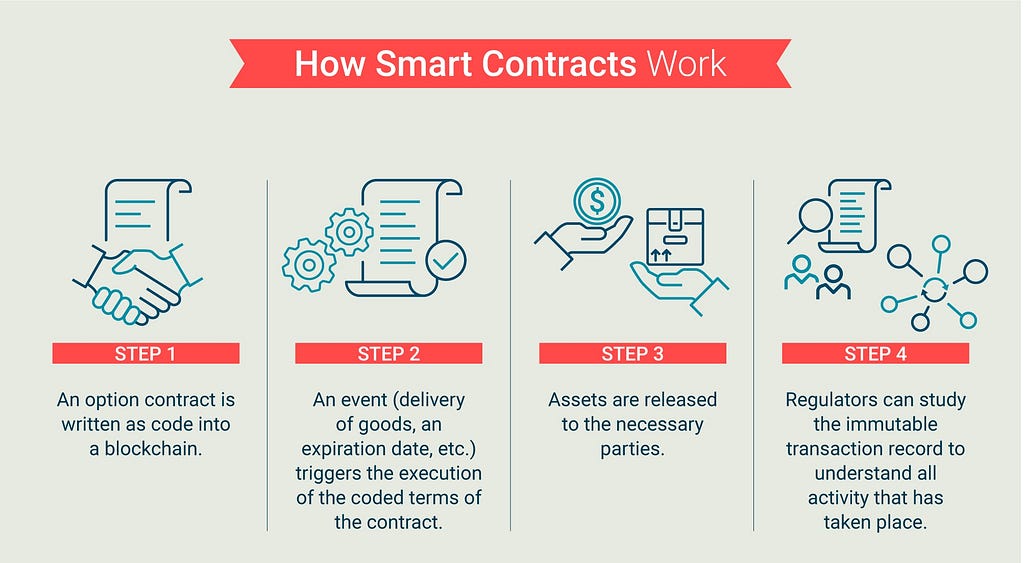Part 3 — Blockchain 101
From the previous chapters, we got acquainted with some of the key elements the blockchain bases itself upon, and indeed are disruptive in terms of the approaching modern-day transfer of “value” issues:
- TRANSPARENCY: each block of data is connected with the previous via the hash, allowing us to scroll back directly into the very FIRST TRANSACTION (aka “genesis block”);
- this makes it possible for the whole transaction history to be fully visible and available in a decentralized manner (every node has a copy of the ledger) hence guarantee the INTEGRITY of the data;
- IMMUTABILITY: once a block is submitted to the blockchain, its validation makes it PERMANENT and IMMUTABLE, hence impossible to alter and undeletable.
- It’s correct to say that blockchain is a trustless solution in its entirety.
Is commonly thought that the blocks contain mostly transaction data, therefore the transfer of value in monetary term from one party to another.
But, as we will see later on, blockchain allows and facilitates the transfer and delivery of services, unlocking of content protected by digital rights management or other types of data manipulation such as changing the name on a land title, and privacy protection by, for example, facilitating the selective release of privacy-protected data to meet a specific request.
This transfer of value would not be possible if not through SMART CONTRACTS.

A smart contract is nothing more than computer code thought as a set of rules that get executed every time a type of event happens.
They come with a peculiar set of valuable features such as:
1) AUTONOMY: can be developed by anyone with no need for intermediaries, lawyers, brokers, or auditors;
2) EFFICIENCY & COST SAVINGS by removing intermediaries (efficiency gains);
3) BACKUP: providing a permanent record by allowing auditing, insight, traceability even if the creator is no longer in business;
4) ACCURACY by replacing human intermediaries with EXECUTABLE CODE (hence the process is ALWAYS PERFORMED THE SAME WAY);
5) PROCESSING SPEED: smart contracts can improve the processing speed of business processes that run across multiple enterprises.
Despite the name, smart contracts are not legally binding contracts.
Their main function is to programmatically execute business logic that performs various tasks, processes, or transactions that have been programmed into them to respond to a given set of conditions.

If the code for the smart contract needs an external source to determine if it has met its restrictions, it will use an ORACLE (a source of knowledge).
An ORACLE sends data from the outside world to a blockchain so specific data, like temperature, can execute the disbursement of money.
This would be useful if the smart contract were executing an insurance contract for crops. Following this example, the contract would look something like this: “If the temperature drops below 32 degrees for more than one hour, release $5,000 to John.”
for a more in-depth look at oracles, here’s a comprehensive and well-written article by Patrick Collins:
https://betterprogramming.pub/what-is-a-blockchain-oracle-f5ccab8dbd72
Smart contracts are indeed complex, but their potential goes far beyond the simple transfer of assets.
They can execute transactions in a wide range of fields, from legal processes to insurance premiums to crowdfunding agreements to financial derivatives.
They also have the potential to disintermediate the legal and financial fields by simplifying and automating routine and repetitive processes for which people currently pay banks and lawyers sizable fees.
There is no doubt that a lot of work still needs to be done towards a more efficient implementation and utilization of those protocols while reaching a common agreement within the legal framework, yet smart contracts are proven to better govern an agreement between two parties.
Because they use the public domain to govern an agreement, limited legal oversight and approval is needed, therefore creating an opportunity for contracts to be commenced more efficiently with fewer parties involved.
Check out our new platform 👉 https://thecapital.io/
https://twitter.com/thecapital_io
“Trust and Security in the Blockchain” was originally published in The Capital on Medium, where people are continuing the conversation by highlighting and responding to this story.



















